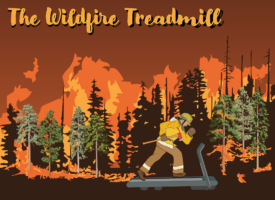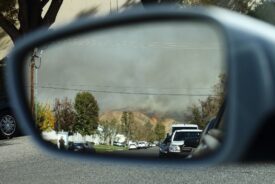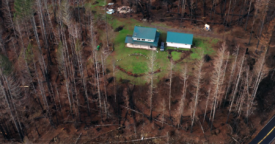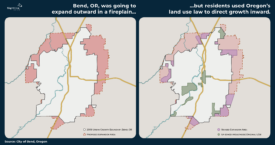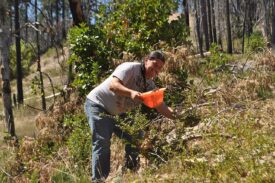Learning to Live with Wildfires
Strategies to protect communities and reduce long-term fire risk.
Research and Analysis
We’re Stuck on a Wildfire Treadmill
Cascadia is trapped in a wildfire catch-22: the more we suppress fires, the worse they get; and the worse fires get, the more we suppress them. There are no easy answers, but we could be doing a lot more to return beneficial fire to the land (like prescribed burns and other management tools) and to adapt our lives to increasing fire weather.
The Best Wildfire Solution We’re Not Using
It’s a dose of tough love, but the most important thing we can do to address the wildfire crisis is to stop building homes in fire-prone places. This article describes why and offers three policy ideas to guide growth to safer areas.
Uncontainable Wildfires are Inevitable. Community Destruction Is Not.
At the same time, we can fire harden homes that are in fireplains, especially new homes for which the extra cost is often negligible. Beyond protecting lives and property, fire-hardened homes make it safer to use beneficial fire as a management tool.
How Land Use Laws Protect Against Wildfire: The Case of Bend, Oregon
The city of Bend, in central Oregon, decades ago implemented growth management policies that turn out to have already slowed the wildfire treadmill. It’s an example other places could learn from.
What’s Misunderstood about Indigenous Cultural Fire Is Sovereignty
Lessons from the Karuk Tribe.
Forthcoming articles
Envisioning Cascadia’s Wildfire Future
What do we see when we game out the region’s various strategies for managing wildfires in a world with increasing fire weather? Adding up the costs—and opportunities—for fuels reduction, fire hardening homes, diverting construction away from fireplains, and more, are we on a fire-smart path?

